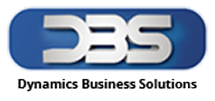Sixty-eight percent of mid-sized GCC companies report faster cycle times after adopting DynaPro. That jump shows how far manual purchasing falls short when teams need speed, accuracy, and cost control.
The DynaPro add-on unites requisitioning, approvals, and purchase execution into one clear flow inside Microsoft Dynamics 365 Business Central. For a practical overview of DynaPro advanced procurement, the solution links vendor catalogues and PunchOut sites so requesters pull accurate product and pricing data directly into requisition lines.
Setup focuses on vendor mapping, category alignment, and secure cXML credentials. Once validated, orders move from request to purchase with automated confirmations and fewer mismatches. Real-time inventory and pricing sync cut catalogue maintenance and reduce risk.
In short, DynaPro strengthens governance with role-based controls and workflow approvals while trimming costs and saving time. A simple example: a requisition becomes an audit-ready purchase order with clear vendor details and budget tracking.
Key Takeaways
- DynaPro reduces manual steps and compresses the purchasing cycle.
- Approved vendor catalogues and PunchOut keep pricing and product data accurate.
- Role-based workflow and policy controls lower risk and improve compliance.
- Real-time sync cuts catalogue upkeep and invoice exceptions.
- End-to-end processes link requisition to purchase and invoice for better cost management.
What’s Driving the Shift to DynaPro for E-Procurement in Mid-Sized Organizations
The shift to DynaPro is driven by a need to cut cycle time, reduce errors, and enforce consistent buying policies.
From manual purchasing to strategic sourcing: manual request flows create delays and data mismatches. DynaPro brings vendor catalogues and negotiated pricing into requisitions so buyers select approved goods without duplicate entry.
One platform for requisitioning, approvals, and orders
Policy-driven access limits who can request certain categories. That reduces risk and speeds approvals because approvers see complete, accurate data every time.
- Unified workflows shorten processing time and lower error rates.
- Real-time catalogue sync cuts maintenance and keeps pricing accurate.
- Integrated reporting gives managers spend visibility by vendor, category, and time period.
| Challenge | DynaPro Advantage | Operational Result | Impact on Costs |
| Manual entry and approvals | Catalog-fed requisitions & automated workflows | Fewer errors, faster cycle time | Lower transaction and exception costs |
| Scattered vendor data | PunchOut & external catalogs with cXML returns | Accurate pricing at point of request | Better negotiated savings |
| Limited spend visibility | Centralized reporting across locations | Actionable supplier and category insights | Improved cost control |
| Ad-hoc supplies and approvals | Policy-driven access and approvals | Reduced off-contract purchases | Sustained long-term savings |
DynaPro leverages Dynamics 365 to centralize vendor engagement, pricing integrity, and goods fulfilment while keeping documentation and audit trails intact. For an implementation overview and practical tips, see this implementation overview and explore top options in this software guide.
e-procurement, Dynamics 365 BC, procurement erp system: How DynaPro Elevates Your Stack
DynaPro centralizes requisition work so teams create, approve, and convert requests with fewer handoffs.
Convenient requisitioning: Structured purchase requests and clear approval workflows let requesters pick from allowed categories. Policy-driven access shows only approved goods, so approvers receive complete data and can act faster.
Strategic sourcing and vendor management
Negotiated pricing and curated catalogues keep vendor selections consistent. Buyers evaluate supplier performance and standardize preferred vendors for reliability and savings.
Automated purchasing and confirmations
Approved requests convert to purchase orders automatically. Where cXML is enabled, confirmations and mapped cart data return to the requisition, improving invoice matching and lowering exceptions.
Inventory awareness and timing
Real-time inventory levels and stock tracking appear at request time. That visibility helps teams avoid over-ordering and aligns purchases with demand signals.
- Unified management: Orders, vendors, and goods movement follow consistent policies and audit trails.
- Reporting & control: Spend reports, budget checks, and vendor analytics surface costs and trends.
- Example: A user shops an approved catalogue, returns the cart with accurate pricing, routes for approval, and converts to a purchase order with full audit history.
For manufacturing and distribution use cases see this manufacturing guide, and for implementation details consult our implementation plans.
PunchOut and External Catalogs: Streamlined Buying with cXML Inside Dynamics 365 Business Central
PunchOut shopping lets users jump to an approved vendor, select items, and return a validated cart into a requisition. This keeps product codes, pricing, and descriptions accurate so approvals move faster and invoices match purchase orders.
PunchOut shopping from approved vendors
How it works: buyers start their purchase, open a supplier site, and bring back cart lines that already include SKU, price, and stock info. That reduces manual entry and speeds the approval workflow.
External catalogue setup essentials
Setup requires linking vendor accounts, mapping procurement categories to control access, and configuring the cXML template with credential domains, company IDs, and the supplier PunchOut URL. Test mode verifies message format before production.
cXML in action and validation
The platform authenticates via a PunchOut Setup Request, the supplier returns cart XML, and the requisition converts into purchase orders when approved. Confirmations appear in purchase order journals for clear documentation and accounts reconciliation.
- Real-time inventory and pricing sync reduce catalogue upkeep and lower invoice mismatches.
- Category policies and approval workflows keep returned carts compliant with purchasing rules.
- Management reporting tracks orders and purchase orders by vendor and category for better cost control.
| Function | Setup Item | Operational Result | Benefit |
| PunchOut shopping | Vendor link, PunchOut URL | Validated cart returns to requisition | Faster approvals, fewer invoice exceptions |
| cXML messaging | Credentials, shared secret, test/prod mode | Secure cart transfer and confirmations | Audit-ready purchase orders and journals |
| Catalog sync | Inventory & pricing feeds | Updated stock and cost data at request time | Lower maintenance, accurate orders |
| Reporting & controls | Category mapping, approval rules | Policy-compliant purchase lines | Improved spend management and tracking |
For a concise useful features overview, DynaPro brings convenient requisitioning, strategic sourcing, and automated purchasing together and extends Business Central so buyers work in one place while using live supplier content.
Conclusion
With DynaPro, teams gain a single platform that centralizes vendor interactions and speeds approval-to-order conversion.
This guide shows how PunchOut, cXML authentication, and mapped external catalogues shorten cycle times and reduce errors. Real-time inventory and pricing updates keep data accurate so approvals and orders match invoices.
Move from manual steps to policy-driven workflows to improve control, compress cycle time, and raise confidence in every purchase. DynaPro centralizes purchasing so teams manage vendors, goods, and approvals with audit-ready documentation.
Results are clear: lower cost and error rates, better on-time fulfilment, and stronger management reporting to guide optimization. To explore regional options and a practical setup, see our software guide.
Dynamics Business Solutions (DBS) is certified Microsoft Dynamics partner in UAE, we take pride in our ability to develop and deploy the right business solution that matches global client’s requirements. DBS has developed in-house state of the art solutions for HR and Payroll, Dynamo and DynaPay on top of Microsoft Dynamics 365 FO and Business Central respectively. These solutions are catering the all business needs of HR and Payroll departments. We provide best services and support to our clients.
To know more, speak to our expert at Dubai: +971 4 447 5525 Jeddah: +966 508162072 or inbox us your query at info@dynamics.ae OR visit www.dynamics.ae
FAQ
What benefits do mid-sized GCC companies gain by moving to DynaPro for digital procurement?
DynaPro reduces manual purchasing tasks, cuts approval times, and lowers error rates. It centralizes requisitions, approvals, purchase orders, and vendor data so teams follow policy and maintain audit trails. Companies see faster ordering, better price compliance, and clearer cost reporting.
How does DynaPro streamline the requisition-to-purchase order process?
The platform provides role-based access, configurable approval workflows, and policy checks at request time. Users submit purchase requests that route automatically for approvals, then generate purchase orders with linked vendor, pricing, and budget data to speed fulfilment and reduce rework.
Can DynaPro handle negotiated vendor pricing and catalogues?
Yes. You can maintain negotiated price lists, approved catalogues, and supplier performance metrics. That enables procurement teams to route buyers to preferred suppliers, enforce contracted rates, and track savings against negotiated terms.
How does automated invoice matching work with purchase orders and receipts?
The solution matches invoices to purchase orders and goods receipts using configurable tolerances. When data aligns, invoices post automatically; exceptions route for review. This improves invoice accuracy, shortens payment cycles, and strengthens auditability.
What inventory visibility does DynaPro provide?
DynaPro integrates real-time stock levels, demand signals, and reorder points into purchasing logic. Buyers see on-hand quantities, reservations, and lead times so they can place smarter orders and avoid stockouts or overstock situations.
How does PunchOut and cXML support improve catalogue purchasing?
PunchOut lets users shop vendor catalogues in real time. cXML exchanges provide secure authentication, return shopping carts into the requisition workflow, and preserve accurate SKUs, pricing, and descriptions for streamlined PO creation.
What are the essentials when setting up external catalogues and vendor links?
Define vendor connections, map procurement categories, configure message formats (like cXML), and set account credentials. Also establish catalogue governance and approval rules so external content aligns with company policy and pricing agreements.
How does the solution support spend visibility and reporting?
Built-in reporting and dashboards provide spend by supplier, category, department, and project. Budget checks, cost-centre controls, and audit logs enable finance and procurement to monitor compliance and identify cost-saving opportunities.
Will DynaPro help enforce purchasing policies and reduce maverick spend?
Yes. Policy-driven access, required approvals, and catalogue-first sourcing steer users to approved suppliers and items. Automated controls and exception alerts reduce off-contract purchases and improve negotiated compliance.
How secure and auditable is data exchanged via cXML and external catalogues?
cXML supports secure authentication and encrypted message exchange. Every transaction—from cart return to PO confirmation—is logged to provide a complete audit trail for compliance, vendor disputes, and internal review.
What performance gains should organizations expect after implementation?
Typical gains include shorter requisition-to-order cycles, fewer invoice exceptions, improved on-time delivery, and lower procurement costs through better contract enforcement. Teams also report reduced administrative workload and clearer financial controls.
How does the platform help with supplier performance and risk management?
You can track delivery lead times, quality metrics, and invoice accuracy to score suppliers. These insights support strategic sourcing, allow remediation of underperforming vendors, and help diversify supply to mitigate risk.
Can purchasing approvals be tailored by department, cost, or dollar threshold?
Approvals are highly configurable. Rules can use department, cost centre, item category, or monetary thresholds to trigger different approvers. This keeps decision-making at the right level while maintaining control.
How are invoices and vendor statements reconciled with bank and accounting records?
Invoices matched to POs and receipts flow to accounts payable with coding and cost centres attached. Reconciliation tools compare vendor statements and payments to posted invoices, helping close the books faster and reducing discrepancies.
What reporting options are available for procurement managers and finance teams?
The platform offers dashboards, scheduled reports, and ad-hoc querying for spend analysis, open purchase orders, overdue deliveries, and budget variances. Exportable reports support detailed audits and board-level reviews.




